

標識
大戦中、この飛行場にはホーカー・ハリケーンやスピットファイアーの部隊が配備されていたそうな。
記念碑

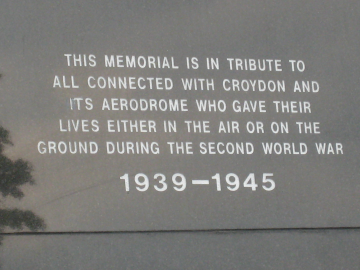

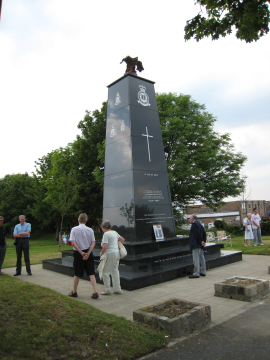
こちらも管制官のHW. Chataway氏
この人がAir Traffic Control Certificate No.1のJames Jeffs氏
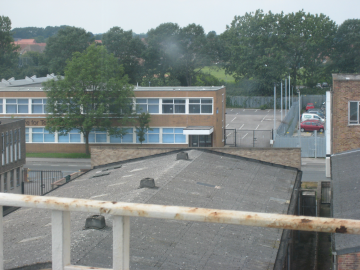
当時は長波(LW)で交信していたそうです。
上の写真の螺旋階段を上るとここに出ます。
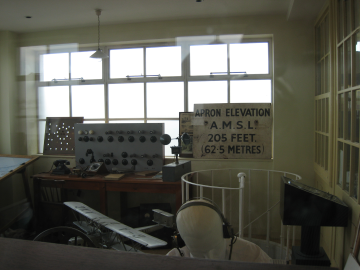
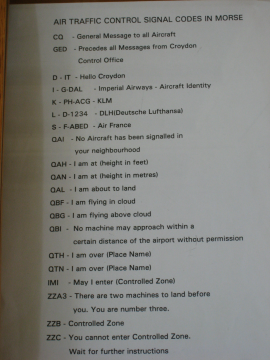
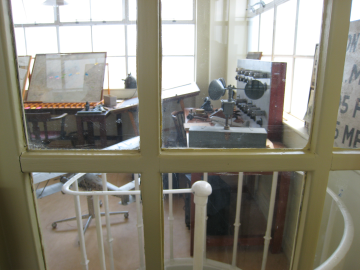
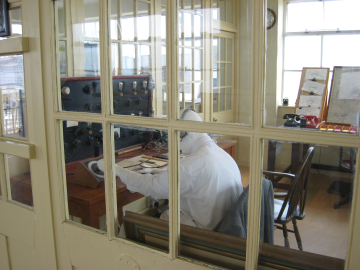
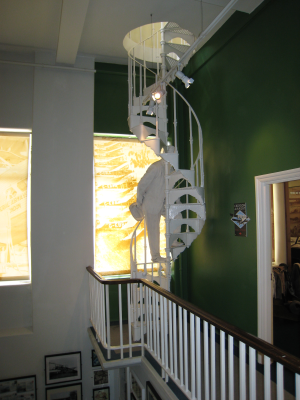
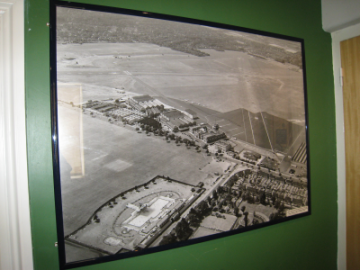
Battle of Britain Memorial FlightのAvro Lancasterが飛来して10分程飛び回りました。
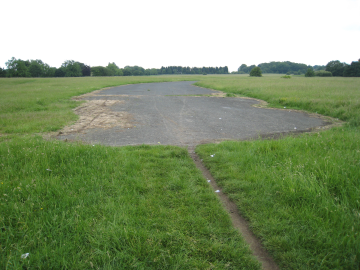
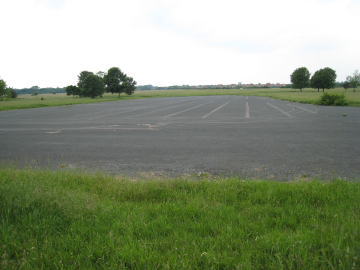
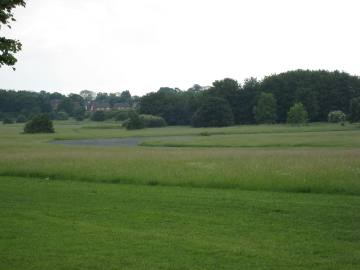
「有史以来、人類の闘争の場面においてこれほど多くの人間が、これほど少ない人間に、これほど多くの恩を蒙ったことはない」 Sir. Winston Spencer Charchill
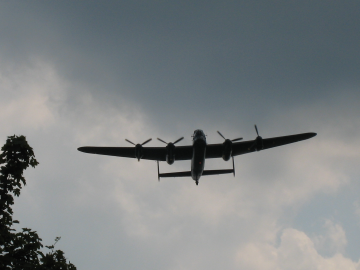
エプロン側からターミナルビルを見る。 両翼はビジネスセンターに改装する際に三階部分を増設している。
現在の展示
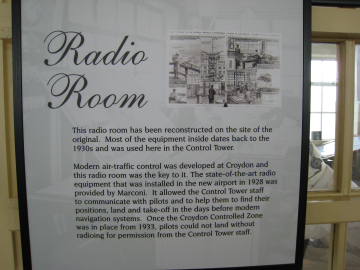
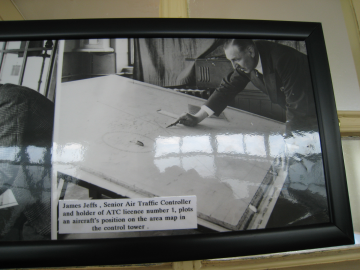
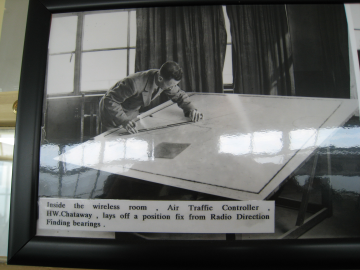
三階は管制室で当時クロイドン空港に飛来したAlan Cobham(CroydonからCapetownの間を往復飛行)、Bert Hinkler(最初にCroydonからAustraliaのDarwinまで飛行)、Charles Kingsford-Smith(Hinklerの記録を破った)、Amy Johnson(CroydonからAustraliaまで飛んだ最初の女性飛行家)等の著名な飛行家に関する展示があります。.
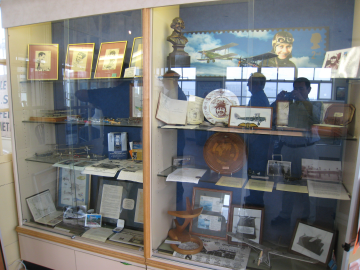
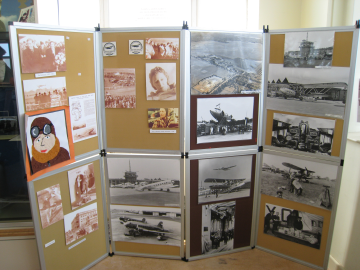
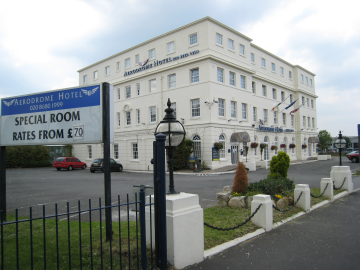


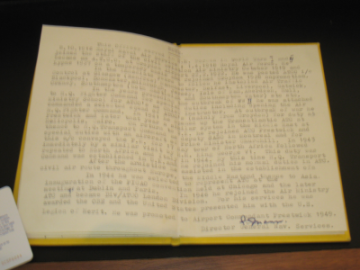
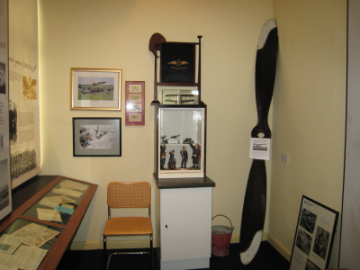
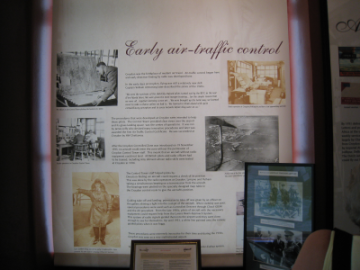
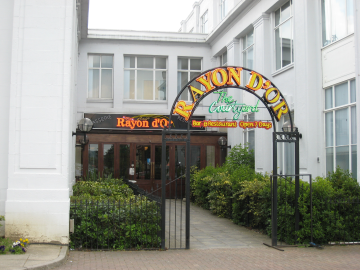
Croydon Airportには舗装された滑走路は無かったと聞いていますので、滑走路の末端に接続するRUNUP−AREAのようなものだと思います。
この方向がRUNWAY30、100m程で舗装が切れていますが、もともとこれ以上舗装されていなかった。 (左上のSITE PLAN 参照。)
Visitor Centreを案内してくださった、Mr. Peter Skinnerから「13:00になったら、表の道路(Purley Way)を右に建物がとぎれるあたりまで行ってみなさい。」と言われたので、そこへ行くと記念碑のようなものがあり何やら人だかりが...。 道路際には下左の標識、退役英空軍の将官、もしやと思って近くにいた警官に聞くと、第二次大戦の有名な「Battle of Britain」の戦勝記念日でした。
SITE PLAN
飛行場のLANDING CHART
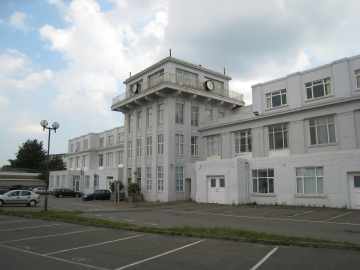
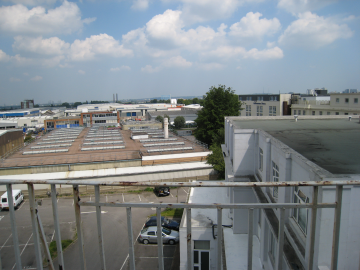
管制塔から西側、飛行場側を見たところ。 木の列あたりまでが当時のエプロンでその向こうが滑走路地区
当時の管制風景
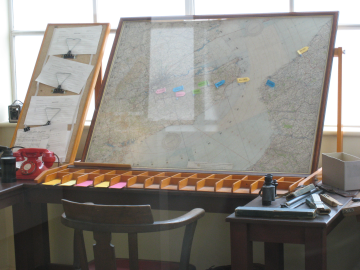
英仏海峡を挟んで左が英国右がヨーロッパ大陸、地図に貼り付けてある紙は航空機の位置を表します。 一番左のピンク色の紙の付近がCroydonです。
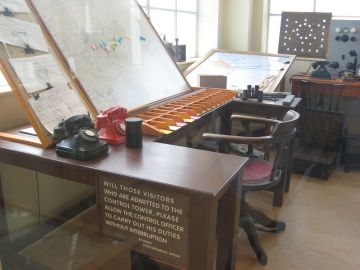
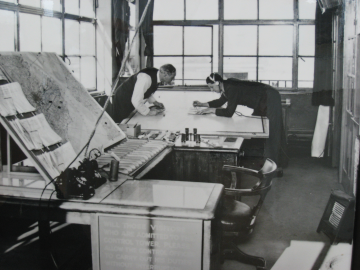
上は無線室を別の角度から、右は航空管制用モールス略号
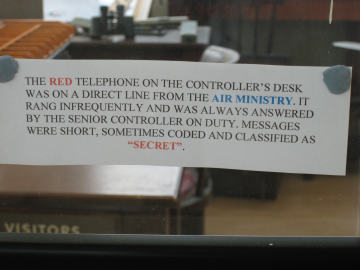
Croydon was the birthplace of modern air travel. Air-traffic control began here and early direction-finding by radio was developed here.
In the early days at Croydon, flying was still a relatively new skill. Captain William Armstrong later described the pilots of the 1920s:
"We were the survivors of the sketchily-trained pilots turned out by the RFC in the war (First World War). We were given the most meagre training... for the simple reason that we were all...together learning a new art... We were brought up the hard way; we learned never to take a chance unless we had to. We learned to think ahead with quite extraordinary perception and to sence hazards before they were on us."
The procedures that were developed at Croydon were intended to help these pilots. The Control Tower provided clear views over the airport and its grass landing space was the contre of operations. It was run by James Jeffs who devised many innovative procedures and later was awarded the first Air Traffic Control Certificate. He was succeeded at Croydon by HW Chattaway.
After the Croydon Controlled Zone was introduced on 19 November 1933, no aircraft could enter the zone without the permisston of Croydon Control Tower staff. This meant that an aircraft without radio equipment could not land. All British pilots and radio officers had to be trained, including Amy Johnson whose radio skills were tested at Croydon in 1934.
The Control Tower staff helped pilots by:
Direction-finding: an aircraft could request a check of its position.
This was done by the radio operators at Croydon, Lympne and Pulham taking a simultaneous bearing on a transmission from the aircraft.
The bearings were plotted on the specially designed map table in the Croydon control room to give the aircraft's position.
Guiding take-off and landing: permission to take-off was given by an officer on the gallery shining a light into the cockpit of the aircraft. When visibility was poor, special procedures were used such as Controlled Descent through Cloud (OGH) and the ZZ procedure. From the late 1930's, pilots of aircraft with the necessary equipment could request help from the Lorenz Beam Approach System.
This system of radio signals guided them into the airport until they were close enough to see for themselves. Up until 1931, a white line painted onto the runway, guided pilots when it was foggy.
These procedures were extremely innovative for their time and during the 1930s Croydon was seen as a very sophisticated airport.